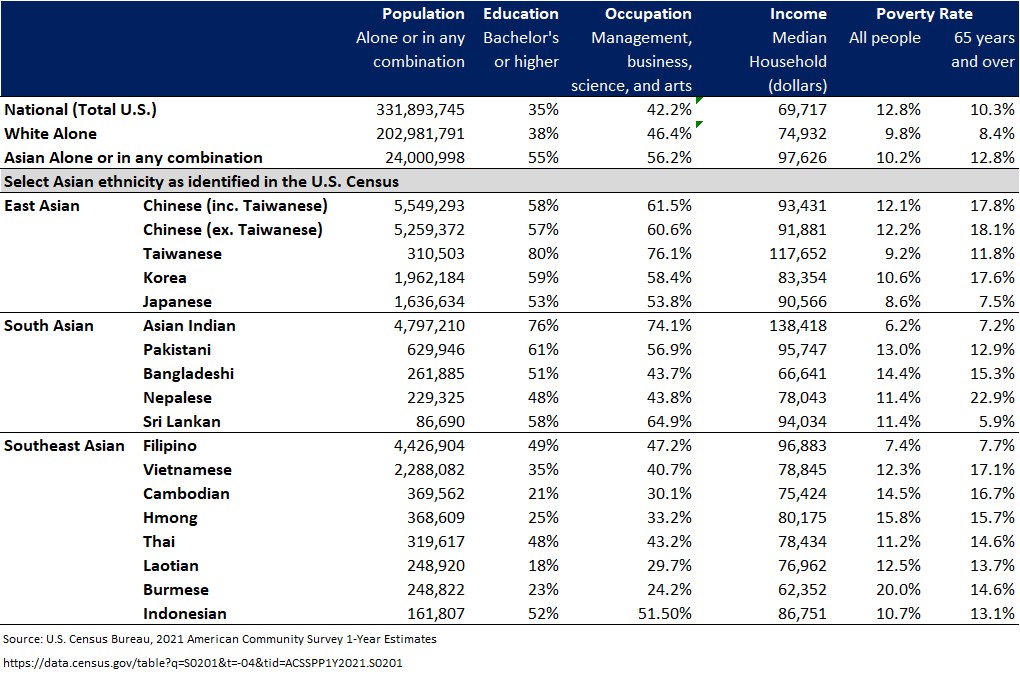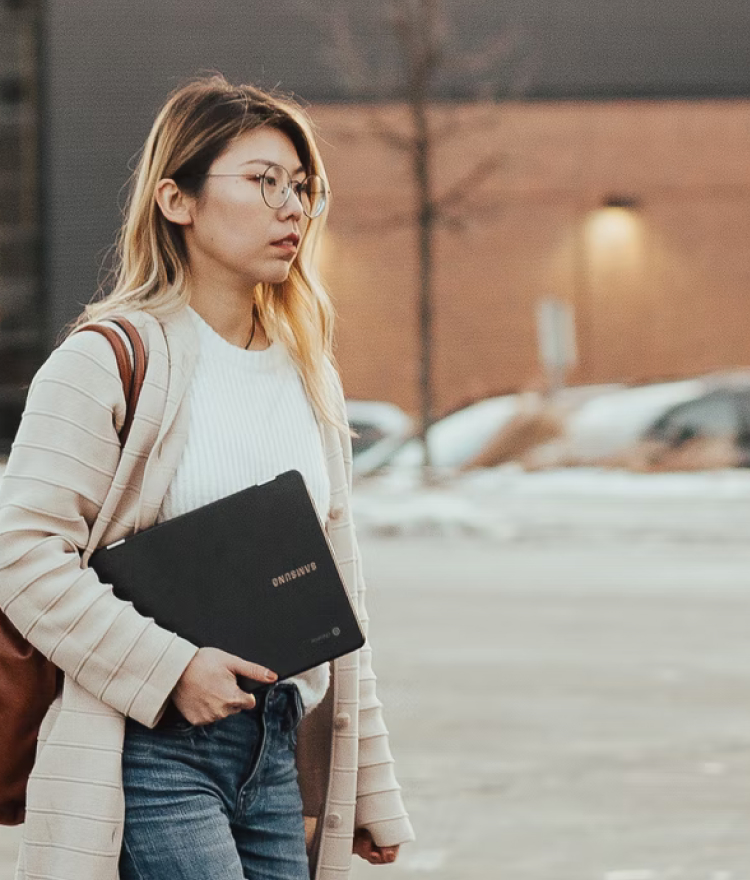Family, Government, Money, Work
U.S. immigration policy and high Asian incomes
Thanks to selective U.S. Immigration policy that prefers highly skilled, highly educated applicants, Asian Americans have the highest median household income of any group in the country. The resultant high income from policy preference further skews the income inequality within the Asian American community and misrepresents Asian American economic mobility in America.

Thanks to U.S. Immigration policy that prefers highly skilled, highly educated immigrants, Asians in America have the highest median household income. It is most pronounced for Asian Indians who have the highest household income of any ethnic group in the country. In 2021, the Asian Indian median household income is $138,418, 42% more than the median Asian household income of $97,627 and double the national median household income of $69,717. High incomes driven by U.S. policy exacerbates the income inequality within the Asian American community and misrepresents Asian American economic mobility.
The U.S. Census shows 4.8 million Asians with Indian heritage living in the U.S., the second largest Asian ethnicity after Chinese. Asian Indians are also the largest Asian ethnicity in the U.S. labor force. Over 75% of Asian Indians have at least a Bachelors degree, and an outsized number of Asian Indians work in high-paying occupations in management, business and science. Most came to the U.S. after the year 2000. How did this come about? The answer points to America’s change in immigration policy.
Immigration Act of 1990 and the rise of the H-1B visa program
Though the U.S. allowed immigrants of specialized skills through The Immigration and Nationality Act of 1952, the Immigration Act of 1990 overhauled the legal immigration system into 3 categories of legal immigration: employment-based, family-sponsored and diversity. This act gave preference for skilled-based immigration that favored highly skilled and highly educated applicants through the H-1B visa program due to America’s need for skilled workers.
Almost 1.8 million H-1B visas have been distributed from 2001-2015 as reported by the Department of Homeland Security (DHS). Over half the visas from 2001-2015 were to applicants from India and 10% to applicants from China. As of 2021, nearly 75% of H-1B visa holders are from India. The DHS reported a median compensation of $118,000 in 2022 for a worker on a H-1B visa that is often sponsored by high paying industries such as tech and finance. The median wage in 2022 for all U.S. workers was $54,132. The high compensation along with the large population of Asians who come through the H-1B visa program increases the aggregate median income of Asians in America.
U.S. immigration policy and the increase of international students
Also pushing the Asian median income higher are Asian international students entering high-paying occupations after graduation contributing back to the U.S. economy. U.S. Immigration policy have expanded the number of international students studying in U.S. colleges for economic and labor advantages. According to U.S. Immigration and Customs Enforcement over 1.1 million international students were enrolled in higher education in 2021. 71.9% of international students are from Asia, and half of all enrolled international students are from either China or India.
When the incomes for all Asians are aggregated, inclusive of the high income of Asians from selective immigration policy, the average and median income for all Asians are higher than for White, Hispanic and Black Americans – leading to a false narrative that all Asians are doing well.
U.S. selective immigration policies distort Asian economic mobility and poverty
The H-1B visa and international student programs are beneficial for America competitively and economically by increasing innovation, private sector output and economic growth. International students were estimated to have generated $33.8 billion to the U.S. economy in the 2021-2022 academic year. What is not highlighted is that this systemic economic mobility path is not widely available and hyper-selective in design.
When the incomes for all Asians are aggregated, inclusive of the high income of Asians from selective immigration policy, the average and median income for all Asians are higher than for White, Hispanic and Black Americans – leading to a false narrative that all Asians are doing well. In reality, the income disparity within Asians in America is very wide.
The high aggregated median household income metric used by government, policy makers and media, makes invisible the Asian Americans who are struggling. When disaggregated by ethnicity, Asian household income and poverty show disparities within the community. Asian seniors generally have higher poverty rates.

The gender wage gap is wider for Asian females to Asian males
A majority of H-1B visas are issued to male applicants. This widens the gender wage gap within the same race. For full-time employed workers, Asian females make $0.78 for every dollar of what Asian males make as compared to all women – across all races, women make $0.82 for every dollar of what men make. For full-time employed Asian Indians, Asian Indian females made $0.77 for every dollar of what Asian Indian males make.

Still seen as a Model Minority, perpetually foreign and pitted against other groups
Mid-January, Republican Rich McCormick of Georgia in his first speech in the US House of Representatives urged for a streamlined immigration process. His quotes still show long standing tropes of Asians stereotyped as a Model Minority yet a perpetual foreigner and pitted against other groups.
He claimed, “Although they [Asian Indians] make up about one per cent of American society, they pay about 6 per cent of the taxes. They are amongst the top producers, and they do not cause problems. They follow laws.”
“They don’t have the problems that we see other people have when they come to the emergency room for overdoses and depression anxiety because they’re the most productive, most family oriented and the best of what represents American citizens. God bless my Indian constituents”.
The outsized influence of U.S. immigration policy on Asian Americans is often left out of the Asian income and educational attainment narratives. It perpetuates the Model Minority stereotype and pits Asians against other minority groups. We need disaggregated data to change this narrative and to make visible all Asians living in America.
Helpful Resources
The share of immigrant workers in high-skill jobs is rising in the U.S. (Pew Research Center)
Characteristics of H-1B Specialty Occupation Workers (U.S. Department of Homeland Security)
2021 SEVIS by the Numbers Report (U.S. Immigration and Customs Enforcement)
Intergenerational Mobility of Immigrants over Two Centuries (National Bureau of Economic Research)
U.S. Employment-Based Immigration Policy (Congressional Research Service)
Get a monthly dose of our latest insights!


About
myasianvoice
At MyAsianVoice, we connect Asian Americans to surveys and research to bridge the Asian data gap.
Join our growing respondent list >>

